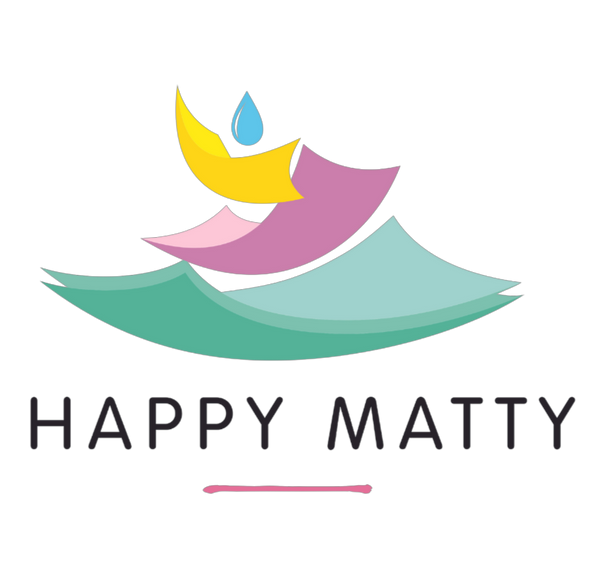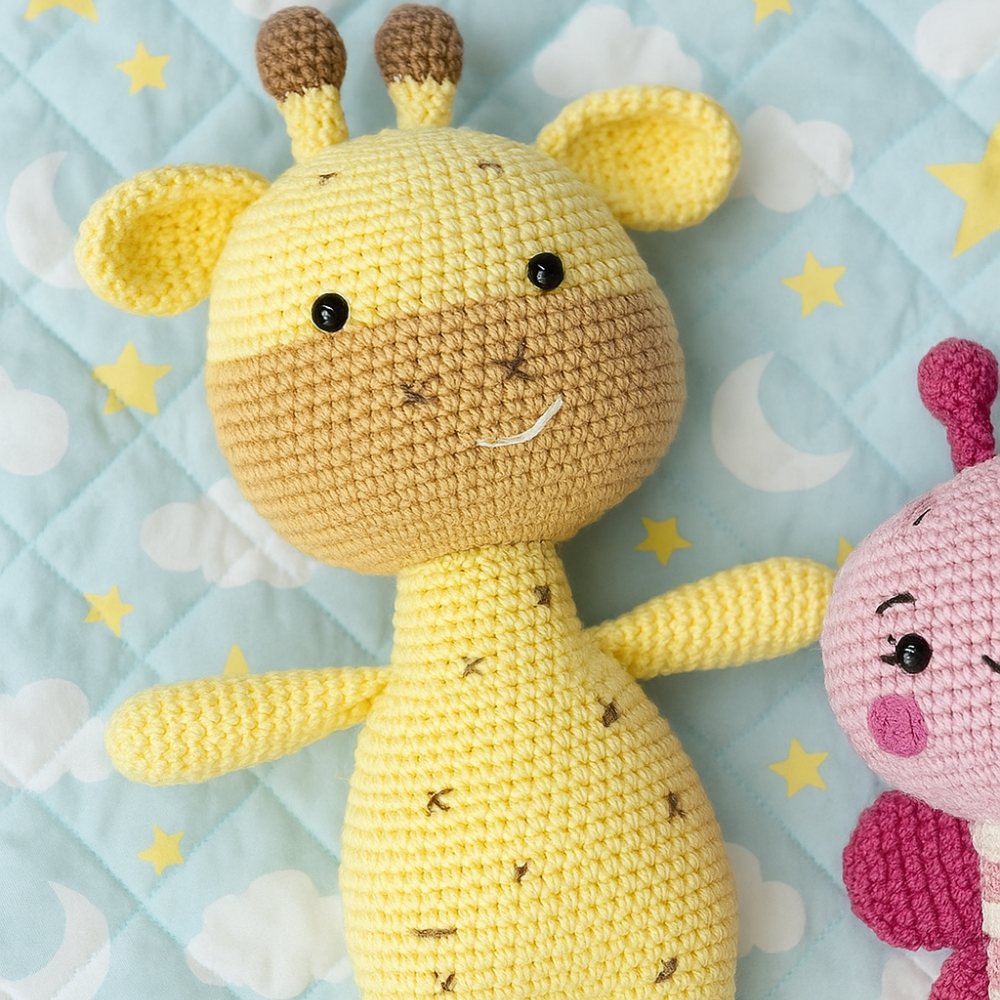There’s something undeniably special about the way a baby wraps their tiny fingers around a rattle for the very first time. That little giggle. That sparkle in their eyes. That moment of connection between toy and tot. And when the rattle is soft, safe, and made with love, it becomes more than just a toy—it becomes a memory in motion. But in a world where mass-produced baby toys line the shelves of every major store, there’s a growing movement of parents pausing to ask: Should I go for handmade crochet rattles or stick with the store-bought ones?
It’s a simple question. But beneath its surface lies a much deeper conversation about craftsmanship, quality, care, and consciousness.
The Allure of Handmade Crochet Rattles
Handmade crochet rattles bring with them a warmth that’s difficult to replicate in factory-made alternatives. Each stitch in a handmade rattle is a mark of human touch—someone sat with a hook in hand, patiently weaving every loop with purpose and precision. These aren't churned out on conveyor belts. They’re crafted—often slowly, intentionally, and with a whole lot of heart.
One of the most beautiful things about handmade crochet rattles is their uniqueness. No two pieces are exactly alike. That slight curve in the bunny ear, the quirky placement of a smile, or the charming variation in color—these imperfections are what make them perfect. They're reminders that the toy your baby is holding is one-of-a-kind, just like them.
More importantly, handmade crochet rattles are often made from natural, baby-safe yarns, free from synthetic dyes or harsh chemicals. For new parents who care deeply about what their baby chews on or snuggles up to, that kind of reassurance is priceless.
Store-Bought Crochet Rattles: The Case for Convenience
Let’s be honest—when you’re a parent juggling sleep schedules, feedings, diaper changes, and the occasional (read: frequent) laundry disaster, convenience matters. Store-bought crochet rattles offer just that. They’re easily accessible, often affordable, and come in a wide range of shapes and colors. Need a last-minute baby shower gift? Just grab one off the shelf or click “Buy Now.”
And to give credit where it’s due, not all store-bought crochet rattles are impersonal or poorly made. Some are produced by reputable brands with strict safety standards and aesthetically pleasing designs. They may even mimic the look of handmade products, complete with charming little details and soft, tactile textures that appeal to babies’ developing senses.
Yet, even the best of the mass-produced options can sometimes lack that emotional spark—the story behind the stitches, the soul within the softness. And that’s where the line between handmade and store-bought truly begins to blur.
The Craft Behind the Stitch: Why the Process Matters
There’s a story in every handmade crochet rattle. Perhaps it was crocheted by a grandmother in a quiet town, stitching in love with every loop. Maybe it was created by a small artisan business that pours their heart into every toy they make. Or perhaps it was handcrafted by a mother-turned-maker who wanted her own child to have something tender and timeless, and then decided to share that gift with the world.
When you hold a handmade rattle, you're not just holding a toy—you’re holding hours of work, layers of intent, and a thread of tradition that stretches across generations.
That process matters, especially in today’s fast-paced consumer culture. It encourages us to slow down, to appreciate quality over quantity, and to recognize the quiet beauty of something made with care.
Handmade rattles also tend to be more customizable. Want a fox instead of a bear? A pastel rainbow over primary colors? A rattle that matches your nursery theme? Artisans often welcome personal touches, allowing parents to co-create something truly special. That kind of creative collaboration just isn’t something you’ll find on an assembly line.
Durability and Design: A Closer Look
When it comes to how long a rattle lasts—or how well it endures teething sessions and enthusiastic shakes—both handmade and store-bought versions can hold their own, depending on the maker and materials.
Handmade crochet rattles made with high-quality cotton yarn and tightly stitched designs can be surprisingly durable. Many makers test their toys rigorously, knowing full well that babies love to chew, tug, and toss anything within reach. Plus, many handmade options are washable, which is a huge plus when you’re dealing with sticky fingers and drooly mouths.
Store-bought crochet rattles, particularly from well-known brands, often go through standardized testing and meet global safety certifications. They’re designed to be safe, sturdy, and uniform. That’s a comfort to many parents who are understandably cautious when it comes to what goes in their baby’s mouth.
The key, really, is to look beyond labels and focus on craftsmanship—whether it’s from a boutique artisan or a reputable store. Feel the fabric. Examine the stitching. Check for secure attachments, especially with eyes, ears, or embellishments. A well-made rattle, handmade or not, will always speak for itself through touch and time.
Emotional Connection and Childhood Memories
There’s a reason why people hold onto their childhood toys for decades. It’s not just nostalgia—it’s connection. It’s the warmth of a soft toy tucked into the crook of a baby’s arm during naptime, or the joyful shake of a rattle that coaxes out their very first giggle.
Handmade crochet rattles often become heirlooms because they carry stories. You’ll remember who gifted it. You might recall the artisan’s note that came with it. One day, you may even tell your child, “This was made just for you.” That personal history turns a simple rattle into a treasured keepsake.
Store-bought crochet rattles can also hold memories, especially if they become a baby’s favorite comfort item. But the connection tends to be more about the use than the origin. There’s still love there—but it’s often love grown over time rather than embedded from the start.
Ethical Choices and Small Business Support
The choice between handmade and store-bought rattles is also, for many parents, an ethical one. In a time where fast fashion and mass manufacturing dominate the landscape, supporting handmade items is a quiet rebellion.
Buying from independent artisans or small baby brands means supporting real people. It means encouraging fair wages, sustainable practices, and creative freedom. It’s a vote for community over corporations, for thoughtfulness over trends.
This is where brands like Happy Matty shine. Their approach is not just about producing baby items—it’s about curating experiences, championing safety, and celebrating design. Their handmade crochet rattles and other nursery products blend style with substance, making it easier for parents to choose ethically without sacrificing beauty or practicality.
In contrast, larger retailers sometimes rely on outsourced manufacturing with minimal transparency about labor practices or environmental impact. That doesn't mean all store-bought options are unethical, but it does require a little more digging if you're keen on making conscious choices.
Comfort and Sensory Experience
Babies explore the world with their hands, their eyes, and, let’s be real, their mouths. So, the texture, sound, and feel of a rattle can make a big difference.
Handmade crochet rattles often incorporate soft yarns that are gentle on sensitive skin. The rhythmic motion of shaking a rattle, paired with the plush fabric and subtle jingle, offers a calming sensory experience. For babies navigating new sounds and sensations, this kind of interaction is golden.
Store-bought versions might vary more in material quality. Some may have plastic inserts or stiffer fabrics that aren’t as snuggly but are perhaps easier to clean. Again, it depends on the maker. Still, the cozy charm of a handmade rattle often wins hearts—both big and small.
Cost Considerations: Worth Every Penny?
Let’s not dance around it—handmade crochet rattles usually come with a higher price tag than their mass-produced counterparts. But when you consider the hours of labor, the quality of materials, and the level of care involved, the price begins to feel justified.
What you're really investing in is the intention behind the item. It's a shift from “What’s cheapest and fastest?” to “What’s safest, most meaningful, and built to last?”
Store-bought crochet rattles, meanwhile, offer budget-friendly options for families who may be balancing multiple baby expenses. And that’s okay too. A toy doesn’t have to be expensive to bring joy.
The trick is to prioritize what matters most to you. Is it personalization? Is it affordability? Is it design or story? Once you know that, the decision becomes much easier.
Suggested Reading: How Eco-Friendly Picnic Mats Are Changing Outdoor Culture
Conclusion: The Best Choice is the One that Feels Right
At the end of the day, the debate between handmade and store-bought crochet rattles isn’t about which is objectively better—it’s about what aligns with your parenting values, your baby’s needs, and your personal sense of meaning.
Some parents may gravitate toward handmade rattles for their charm, safety, and emotional value. Others may opt for store-bought versions that offer accessibility and reliability. And many will find space for both—a lovingly handmade rattle for special moments and a store-bought one for the diaper bag or car seat.
It’s not a battle between old and new, between tradition and convenience. It’s a balance. A reminder that in parenting, like in life, the best choices are often the ones made from the heart.
And if your heart is leaning toward handmade, ethically sourced, and thoughtfully designed baby products, Happy Matty is a wonderful place to start. Their crochet rattles blend craftsmanship with care, offering parents a beautiful way to welcome their little ones into the world—one soft stitch at a time.



